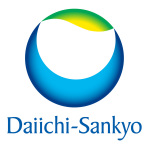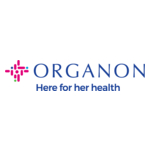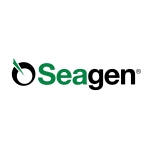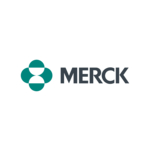- 28-month, median follow-up data from the CARTITUDE-1 study of cilta-cel in patients with relapsed or refractory multiple myeloma presented at the 2022 ASCO Annual meeting
- Overall response rate remains at 98 percent after more than two years, with median progression-free and overall survival not yet being reached
- Results from Cohorts A and B of the CARTITUDE-2 study reinforce promise of cilta-cel in earlier lines of multiple myeloma treatment
SOMERSET, N.J. — (BUSINESS WIRE) — $LEGN–Legend Biotech Corporation (NASDAQ: LEGN) (Legend Biotech), a global biotechnology company developing, manufacturing and commercializing novel therapies to treat life-threatening diseases, presented today new and updated results from the CARTITUDE clinical development program studying ciltacabtagene autoleucel (cilta-cel) in the treatment of multiple myeloma at the 2022 American Society of Clinical Oncology (ASCO) Annual Meeting. Earlier data from the CARTITUDE-1 study supported recent regulatory approvals for CARVYKTI™ by the U.S. Food and Drug Administration and the European Commission, and ongoing results from the multi-cohort CARTITUDE-2 study are being used to inform future trials of CARVYKTI™ treatment in multiple patient populations and treatment settings.

Longer-Term CARTITUDE-1 Data Continue to Show Deep and Durable Responses
Data from the ongoing Phase 1b/2 CARTITUDE-1 study continue to show deep and durable responses in heavily pretreated patients with relapsed or refractory multiple myeloma at a median 28-month follow up (MFU), with an overall response rate (ORR) of 98 percent (95 percent Confident Interval [CI], 92.7-99.7).1,2
Responses in 97 patients treated with CARVYKTI™ were sustained from the 22-month median follow-up data previously presented at the 2021 American Society of Hematology (ASH) Annual Meeting, with 83 percent of patients achieving a stringent complete response (sCR) at median 28 MFU.1 Median progression-free survival (PFS) and median overall survival (OS) were not reached at time of follow-up, suggesting long-term durability of responses and survival for patients.1 Two-year PFS and OS rates were 55 percent (95 percent CI, 44.0–64.6) and 70 percent (95 percent CI, 60.1–78.6), respectively.1 Sixty-one patients had samples evaluable for minimal residual disease (MRD) status, and of those, 92 percent achieved MRD negativity at the 10-5 threshold.1 Of those evaluable, MRD negativity was sustained for more than 6 months in 68 percent and more than 12 months in 55 percent of patients.1 Two-year PFS rates in patients who achieved sustained MRD negativity for 6 months or longer and 12 months or longer were 73 percent (95 percent CI, 52.1 to 85.9) and 79 percent (95 percent CI, 51.5 to 91.8), respectively. In these same patients, two-year OS rates were 94 percent (95 percent CI, 76.1 to 98.3) and 91 percent (95 percent CI, 67.7 to 97.6), respectively.1
The CARTITUDE-1 study included patients who received a median of six prior treatment regimens (range, 3-18).1 All patients were triple-class [immunomodulatory agent (IMiD), proteasome inhibitor (PI) and anti-CD38 antibody] exposed, while 42 percent of patients were penta-drug refractory and 99 percent of patients were refractory to the last line of therapy.1
“After more than two years of follow-up, cilta-cel continues to provide durable responses for patients with relapsed or refractory multiple myeloma who often have exhausted multiple lines of therapy and face poor prognoses,” said Saad Z. Usmani, M.D., M.B.A., F.A.C.P., Chief of Myeloma Service, at Memorial Sloan Kettering Cancer Center, and study investigator. “This population of patients has an unmet need, and it is exciting that we have a treatment option that can keep disease progression at bay.”
Median time to first response was one month (range, 0.9-10.7 months), with responses deepening over time.1 Additionally, median time to best response was 2.6 months (range, 0.9-17.8 months) and median time to complete response (CR) or better was 2.9 months (range, 0.9-17.8 months).1
At 28-month median follow up, the most common hematologic adverse events (AEs) observed were neutropenia (96 percent); anemia (81 percent); thrombocytopenia (79 percent); leukopenia (62 percent); and lymphopenia (54 percent). Since the primary 12-month publication,3 no new events of CRS (no changes in incidence, time to onset, or duration) occurred and one new case of Parkinsonism (also referred to as movement and neurocognitive treatment-emergent adverse events) occurred.1
CARTITUDE-2 Data Reinforce Potential for Use in Earlier-Line of Treatment
Results from the multicohort Phase 2 CARTITUDE-2 study (NCT04133636) evaluating cilta-cel safety and efficacy in various clinical settings for patients with multiple myeloma were also presented at ASCO 2022, demonstrating the promise of CARVYKTI™ earlier in the course of multiple myeloma treatment.
Updated data from Cohort A examined the safety and efficacy of cilta-cel in 20 patients with multiple myeloma after one to three prior lines of therapy and who are lenalidomide-refractory (Abstract #8020).4 At a median follow-up of 17.1 months, the ORR was 95 percent, which included 90 percent of patients achieving CR or better and 95 percent achieving very good partial response (VGPR) or better. The median time to first response was one month and the median time to best response was 2.6 months. The 15-month PFS rate was 70 percent.4 Of the 16 patients who were MRD-evaluable, all achieved MRD negativity at 10-5.4
Results from Cohort B of the study, evaluating the safety and efficacy of cilta-cel in patients relapsed or refractory multiple myeloma who received one prior line of therapy including a PI and IMiD and had disease progression within 12 months of treatment with autologous stem cell transplant (ASCT) or within 12 months of the start of antimyeloma therapy for patients who have not had ASCT, were also presented (Abstract #8029).5 At a median of 13 months follow-up, 19 patients treated in this cohort achieved an ORR of 100 percent, with 90 percent of patients achieving a CR or better, and 95 percent of patients achieving a VGPR or better.5 Median time to first response was one month (range, 0.9-9.7) and median time to best response was 5.1 months.5 The 12-month PFS rate was 90 percent. Of the 15 patients who were MRD-evaluable, 14 achieved MRD negativity at 10-5.5
In both of these cohorts from CARTITUDE-2, the overall safety profile, including incidence of CRS and most common hematologic AEs, was consistent with that of CARTITUDE-1.5
“On the heels of the approval of CARVYKTI™ in heavily pre-treated patients, we’re pleased to see the longer-term depth and durability of responses in the CARTITUDE-1 study,” said Ying Huang, Chief Executive Officer of Legend Biotech. “In addition, the follow up results from the ongoing CARTITUDE-2 Cohort A and B studies support the potential of cilta-cel as a therapeutic option for earlier lines of treatment. We are inspired by the promise of cilta-cel in new patient populations and look forward to helping multiple myeloma patients who continue to have unmet needs across the treatment paradigm.”
Disclosure: Dr. Usmani has provided consulting, advisory, and speaking services to Legend Biotech and Janssen, Biotech, Inc.
About CARVYKTI™ (Ciltacabtagene autoleucel; cilta-cel)
CARVYKTI™ is a BCMA-directed, genetically modified autologous T-cell immunotherapy, which involves reprogramming a patient’s own T-cells with a transgene encoding a chimeric antigen receptor (CAR) that identifies and eliminates cells that express BCMA. BCMA is primarily expressed on the surface of malignant multiple myeloma B-lineage cells, as well as late-stage B-cells and plasma cells. The CARVYKTI™ CAR protein features two BCMA-targeting single domain antibodies designed to confer high avidity against human BCMA. Upon binding to BCMA-expressing cells, the CAR promotes T-cell activation, expansion, and elimination of target cells.6
In December 2017, Legend Biotech Corporation entered into an exclusive worldwide license and collaboration agreement with Janssen Biotech, Inc. (Janssen) to develop and commercialize cilta-cel.
In February 2022, CARVYKTI™ was approved by the U.S. Food and Drug Administration (FDA) for the treatment of adults with relapsed or refractory multiple myeloma.7 In May 2022, the European Commission (EC) granted conditional marketing authorization of CARVYKTI™ for the treatment of adults with relapsed and refractory multiple myeloma.8 Cilta-cel was granted Breakthrough Therapy Designation in the U.S. in December 2019 and in China in August 2020. In addition, cilta-cel received a PRIority MEdicines (PRIME) designation from the European Commission in April 2019. Cilta-cel also received Orphan Drug Designation from the U.S. FDA in February 2019, from the European Commission in February 2020, and from the Pharmaceuticals and Medicinal Devices Agency (PMDA) in Japan in June 2020. In May 2022, the European Medicines Agency’s Committee for Orphan Medicinal Products recommended by consensus that the orphan designation for cilta-cel be maintained on the basis of clinical data demonstrating improved and sustained complete response rates following treatment.9
About CARTITUDE-1
CARTITUDE-1 (NCT03548207)10 is an ongoing Phase 1b/2, open-label, single arm, multi-center trial evaluating cilta-cel for the treatment of adult patients with relapsed or refractory multiple myeloma, who previously received at least three prior lines of therapy including a proteasome inhibitor (PI), an immunomodulatory agent (IMiD) and an anti-CD38 monoclonal antibody. Of the 97 patients enrolled in the trial, 99 percent were refractory to the last line of treatment and 88 percent were triple-class refractory, meaning their cancer did not respond, or no longer responds, to an IMiD, a PI and an anti-CD38 monoclonal antibody.
About CARTITUDE-2
CARTITUDE-2 (NCT04133636)11 is an ongoing Phase 2 multicohort study evaluating the safety and efficacy of cilta-cel in various clinical settings. Cohort A included patients who had progressive multiple myeloma after 1–3 prior lines of therapy, including PI and IMiD, were lenalidomide refractory, and had no prior exposure to BCMA-targeting agents. Cohort B included patients with early relapse after initial therapy that included a PI and IMiD. The primary objective was to evaluate the percentage of patients with negative minimal residual disease (MRD).
About Multiple Myeloma
Multiple myeloma is an incurable blood cancer that starts in the bone marrow and is characterized by an excessive proliferation of plasma cells.12 In 2022, it is estimated that more than 34,000 people will be diagnosed with multiple myeloma, and more than 12,000 people will die from the disease in the U.S.13 While some patients with multiple myeloma have no symptoms at all, most patients are diagnosed due to symptoms that can include bone problems, low blood counts, calcium elevation, kidney problems or infections.14 Although treatment may result in remission, unfortunately, patients will most likely relapse.15 Patients who relapse after treatment with standard therapies, including protease inhibitors, immunomodulatory agents, and an anti-CD38 monoclonal antibody, have poor prognoses and few treatment options available.16,17
CARVYKTI™ Important Safety Information
INDICATIONS AND USAGE
CARVYKTI™ (ciltacabtagene autoleucel) is a B-cell maturation antigen (BCMA)-directed genetically modified autologous T cell immunotherapy indicated for the treatment of adult patients with relapsed or refractory multiple myeloma, after four or more prior lines of therapy, including a proteasome inhibitor, an immunomodulatory agent, and an anti-CD38 monoclonal antibody.
WARNING: CYTOKINE RELEASE SYNDROME, NEUROLOGIC TOXICITIES, HLH/MAS, and PROLONGED and RECURRENT CYTOPENIA
- Cytokine Release Syndrome (CRS), including fatal or life-threatening reactions, occurred in patients following treatment with CARVYKTI™. Do not administer CARVYKTI™ to patients with active infection or inflammatory disorders. Treat severe or life-threatening CRS with tocilizumab or tocilizumab and corticosteroids.
- Immune Effector Cell-Associated Neurotoxicity Syndrome (ICANS), which may be fatal or life-threatening, occurred following treatment with CARVYKTI™, including before CRS onset, concurrently with CRS, after CRS resolution, or in the absence of CRS. Monitor for neurologic events after treatment with CARVYKTI™. Provide supportive care and/or corticosteroids as needed.
- Parkinsonism and Guillain-Barré syndrome and their associated complications resulting in fatal or life-threatening reactions have occurred following treatment with CARVYKTI™.
- Hemophagocytic Lymphohistiocytosis/Macrophage Activation Syndrome (HLH/MAS), including fatal and life-threatening reactions, occurred in patients following treatment with CARVYKTI™. HLH/MAS can occur with CRS or neurologic toxicities.
- Prolonged and/or recurrent cytopenias with bleeding and infection and requirement for stem cell transplantation for hematopoietic recovery occurred following treatment with CARVYKTI™.
- CARVYKTI™ is available only through a restricted program under a Risk Evaluation and Mitigation Strategy (REMS) called the CARVYKTI™ REMS Program.
WARNINGS AND PRECAUTIONS
Cytokine Release Syndrome (CRS) including fatal or life-threatening reactions, occurred following treatment with CARVYKTI™ in 95% (92/97) of patients receiving ciltacabtagene autoleucel. Grade 3 or higher CRS (2019 ASTCT grade)1 occurred in 5% (5/97) of patients, with Grade 5 CRS reported in 1 patient. The median time to onset of CRS was 7 days (range: 1-12 days). The most common manifestations of CRS included pyrexia (100%), hypotension (43%), increased aspartate aminotransferase (AST) (22%), chills (15%), increased alanine aminotransferase (14%) and sinus tachycardia (11%). Grade 3 or higher events associated with CRS included increased AST and ALT, hyperbilirubinemia, hypotension, pyrexia, hypoxia, respiratory failure, acute kidney injury, disseminated intravascular coagulation, HLH/MAS, angina pectoris, supraventricular and ventricular tachycardia, malaise, myalgias, increased C-reactive protein, ferritin, blood alkaline phosphatase and gamma-glutamyl transferase.
Identify CRS based on clinical presentation. Evaluate for and treat other causes of fever, hypoxia, and hypotension. CRS has been reported to be associated with findings of HLH/MAS, and the physiology of the syndromes may overlap. HLH/MAS is a potentially life-threatening condition. In patients with progressive symptoms of CRS or refractory CRS despite treatment, evaluate for evidence of HLH/MAS.
Sixty-nine of 97 (71%) patients received tocilizumab and/or a corticosteroid for CRS after infusion of ciltacabtagene autoleucel. Forty-four (45%) patients received only tocilizumab, of whom 33 (34%) received a single dose and 11 (11%) received more than one dose; 24 patients (25%) received tocilizumab and a corticosteroid, and one patient (1%) received only corticosteroids. Ensure that a minimum of two doses of tocilizumab are available prior to infusion of CARVYKTI™
Monitor patients at least daily for 10 days following CARVYKTI™ infusion at a REMS-certified healthcare facility for signs and symptoms of CRS. Monitor patients for signs or symptoms of CRS for at least 4 weeks after infusion. At the first sign of CRS, immediately institute treatment with supportive care, tocilizumab, or tocilizumab and corticosteroids. Counsel patients to seek immediate medical attention should signs or symptoms of CRS occur at any time. Neurologic toxicities, which may be severe, life-threatening or fatal, occurred following treatment with CARVYKTI™
Neurologic toxicities, which may be severe, life-threatening or fatal, occurred following treatment with CARVYKTI™. Neurologic toxicities included ICANS, neurologic toxicity with signs and symptoms of parkinsonism, Guillain-Barré Syndrome, peripheral neuropathies, and cranial nerve palsies. Counsel patients on the signs and symptoms of these neurologic toxicities, and on the delayed nature of onset of some of these toxicities. Instruct patients to seek immediate medical attention for further assessment and management if signs or symptoms of any of these neurologic toxicities occur at any time.
Overall, one or more subtypes of neurologic toxicity described below occurred following ciltacabtagene autoleucel in 26% (25/97) of patients, of which 11% (11/97) of patients experienced Grade 3 or higher events. These subtypes of neurologic toxicities were also observed in two ongoing studies.
Immune Effector Cell-Associated Neurotoxicity Syndrome (ICANS): Patients receiving CARVYKTI™ may experience fatal of life-threatening ICANS following treatment with CARVYKTI™, including before CRS onset, concurrently with CRS, after CRS resolution, or in the absence of CRS.
ICANS occurred in 23% (22/97) of patients receiving ciltacabtagene autoleucel including Grade 3 or 4 events in 3% (3/97) and Grade 5 (fatal) events in 2% (2/97). The median time to onset of ICANS was 8 days (range 1-28 days). All 22 patients with ICANS had CRS. The most frequent (≥5%) manifestation of ICANS included encephalopathy (23%), aphasia (8%) and headache (6%). Monitor patients at least daily for 10 days following CARVYKTI™ infusion at the REMS-certified healthcare facility for signs and symptoms of ICANS. Rule out other causes of ICANS symptoms.
Monitor patients for signs or symptoms of ICANS for at least 4 weeks after infusion and treat promptly. Neurologic toxicity should be managed with supportive care and/or corticosteroids as needed.
Parkinsonism: Of the 25 patients in the CARTITUDE-1 study experiencing any neurotoxicity, five male patients had neurologic toxicity with several signs and symptoms of parkinsonism, distinct from immune effector cell-associated neurotoxicity syndrome (ICANS). Neurologic toxicity with parkinsonism has been reported in other ongoing trials of ciltacabtagene autoleucel. Patients had parkinsonian and nonparkinsonian symptoms that included tremor, bradykinesia, involuntary movements, stereotypy, loss of spontaneous movements, masked facies, apathy, flat affect, fatigue, rigidity, psychomotor retardation, micrographia, dysgraphia, apraxia, lethargy, confusion, somnolence, loss of consciousness, delayed reflexes, hyperreflexia, memory loss, difficulty swallowing, bowel incontinence, falls, stooped posture, shuffling gait, muscle weakness and wasting, motor dysfunction, motor and sensory loss, akinetic mutism, and frontal lobe release signs. The median onset of parkinsonism in the 5 patients in CARTITUDE-1 was 43 days (range 15-108) from infusion of ciltacabtagene autoleucel.
Monitor patients for signs and symptoms of parkinsonism that may be delayed in onset and managed with supportive care measures. There is limited efficacy information with medications used for the treatment of Parkinson’s disease, for the improvement or resolution of parkinsonism symptoms following CARVYKTI™ treatment.
Guillain-Barré Syndrome: A fatal outcome following Guillain-Barré Syndrome (GBS) has occurred in another ongoing study of ciltacabtagene autoleucel despite treatment with intravenous immunoglobulins. Symptoms reported include those consistent with MillerFisher variant of GBS, encephalopathy, motor weakness, speech disturbances and polyradiculoneuritis.
Monitor for GBS. Evaluate patients presenting with peripheral neuropathy for GBS. Consider treatment of GBS with supportive care measures and in conjunction with immunoglobulins and plasma exchange, depending on severity of GBS.
Peripheral Neuropathy: Six patients in CARTITUDE-1 developed peripheral neuropathy. These neuropathies presented as sensory, motor or sensorimotor neuropathies. Median time of onset of symptoms was 62 days (range 4-136 days), median duration of peripheral neuropathies was 256 days (range 2-465 days) including those with ongoing neuropathy. Patients who experienced peripheral neuropathy also experienced cranial nerve palsies or GBS in other ongoing trials of ciltacabtagene autoleucel.
Cranial Nerve Palsies: Three patients (3.1%) experienced cranial nerve palsies in CARTITUDE-1. All three patients had 7th cranial nerve palsy; one patient had 5th cranial nerve palsy as well. Median time to onset was 26 days (range 21-101 days) following infusion of ciltacabtagene autoleucel. Occurrence of 3rd and 6th cranial nerve palsy, bilateral 7th cranial nerve palsy, worsening of cranial nerve palsy after improvement, and occurrence of peripheral neuropathy in patients with cranial nerve palsy have also been reported in ongoing trials of ciltacabtagene autoleucel. Monitor patients for signs and symptoms of cranial nerve palsies. Consider management with systemic corticosteroids, depending on the severity and progression of signs and symptoms.
Hemophagocytic Lymphohistiocytosis (HLH)/Macrophage Activation Syndrome (MAS: Fatal HLH occurred in one patient (1%), 99 days after ciltacabtagene autoleucel. The HLH event was preceded by prolonged CRS lasting 97 days. The manifestations of HLH/MAS include hypotension, hypoxia with diffuse alveolar damage, coagulopathy, cytopenia, and multi-organ dysfunction, including renal dysfunction. HLH is a life-threatening condition with a high mortality rate if not recognized and treated early. Treatment of HLH/MAS should be administered per institutional standards.
CARVYKTI™ REMS: Because of the risk of CRS and neurologic toxicities, CARVYKTI™ is available only through a restricted program under a Risk Evaluation and Mitigation Strategy (REMS) called the CARVYKTI™ REMS.
Further information is available at www.CARVYKTIrems.com or 1-844-672-0067.
Prolonged and Recurrent Cytopenias: Patients may exhibit prolonged and recurrent cytopenias following lymphodepleting chemotherapy and CARVYKTI™ infusion. One patient underwent autologous stem cell therapy for hematopoietic reconstitution due to prolonged thrombocytopenia.
In CARTITUDE-1, 30% (29/97) of patients experienced prolonged Grade 3 or 4 neutropenia and 41% (40/97) of patients experienced prolonged Grade 3 or 4 thrombocytopenia that had not resolved by Day 30 following ciltacabtagene autoleucel infusion.
Recurrent Grade 3 or 4 neutropenia, thrombocytopenia, lymphopenia and anemia were seen in 63% (61/97), 18% (17/97), 60% (58/97), and 37% (36/97) after recovery from initial Grade 3 or 4 cytopenia following infusion. After Day 60 following ciltacabtagene autoleucel infusion, 31%, 12% and 6% of patients had a recurrence of Grade 3 or higher lymphopenia, neutropenia and thrombocytopenia, respectively, after initial recovery of their Grade 3 or 4 cytopenia. Eighty-seven percent (84/97) of patients had one, two, or three or more recurrences of Grade 3 or 4 cytopenias after initial recovery of Grade 3 or 4 cytopenia. Six and 11 patients had Grade 3 or 4 neutropenia and thrombocytopenia, respectively, at the time of death.
Monitor blood counts prior to and after CARVYKTI™ infusion. Manage cytopenias with growth factors and blood product transfusion support according to local institutional guidelines.
Infections: CARVYKTI™ should not be administered to patients with active infection or inflammatory disorders.
Contacts
Investor Contacts:
Joanne Choi, Senior Manager of Investor Relations, Legend Biotech
joanne.choi@legendbiotech.com
Crystal Chen, Manager of Investor Relations, Legend Biotech
crystal.chen@legendbiotech.com
Press Contact:
Tina Carter, Corporate Communications Lead, Legend Biotech
tina.carter@legendbiotech.com
(908) 331-5025
Read full story here











